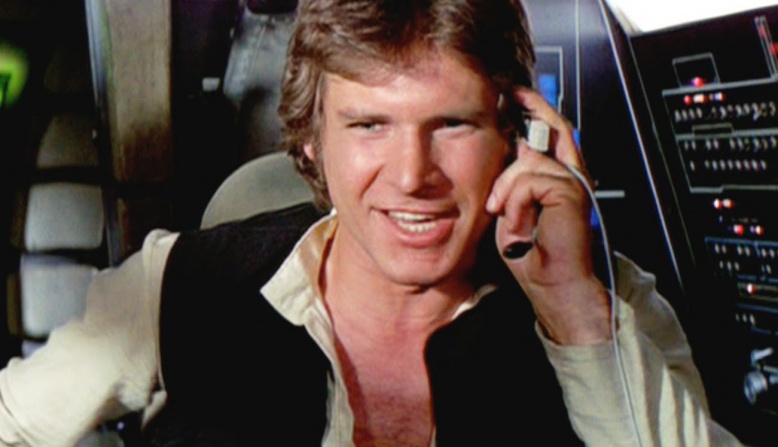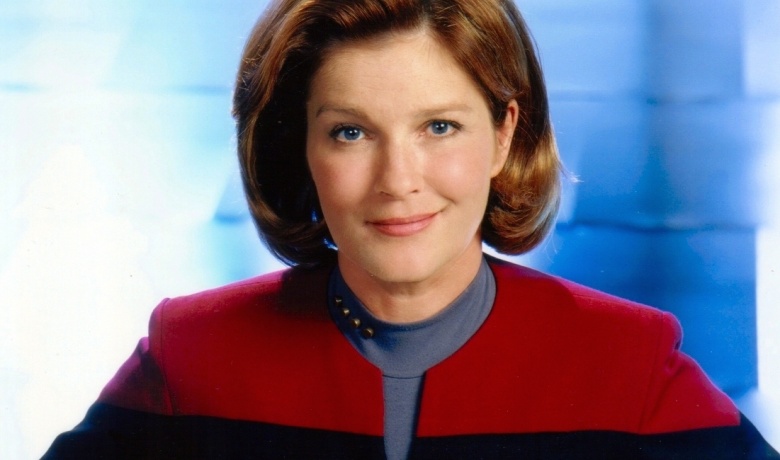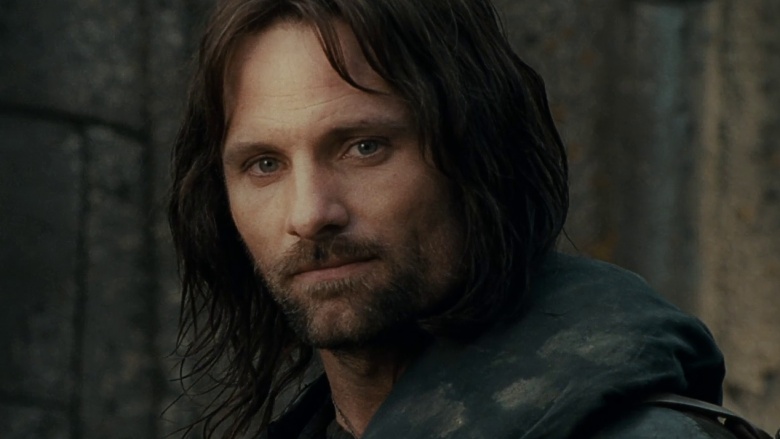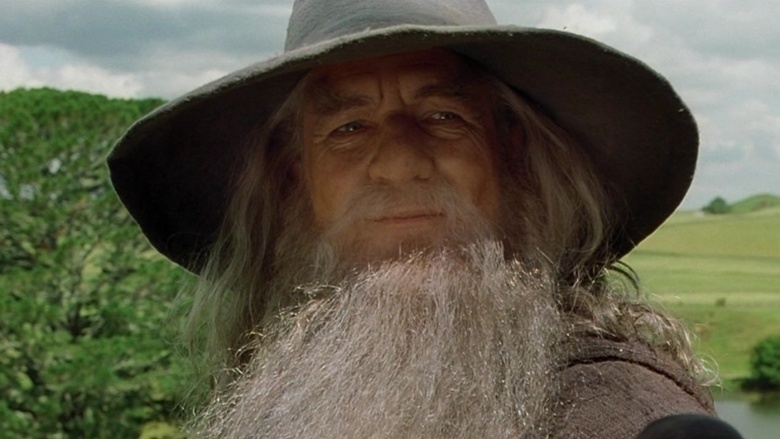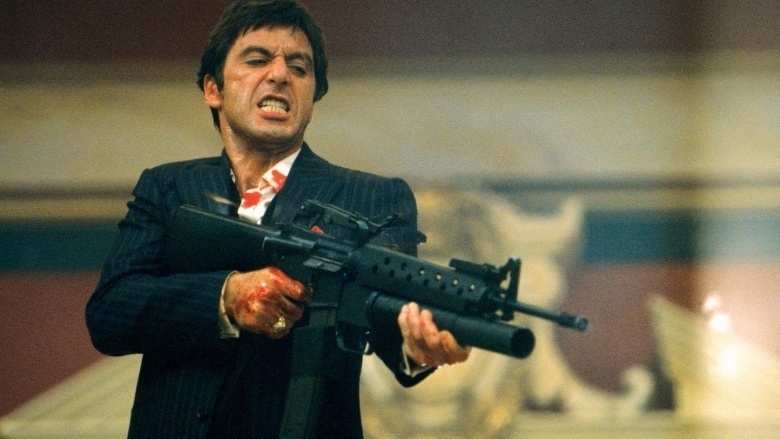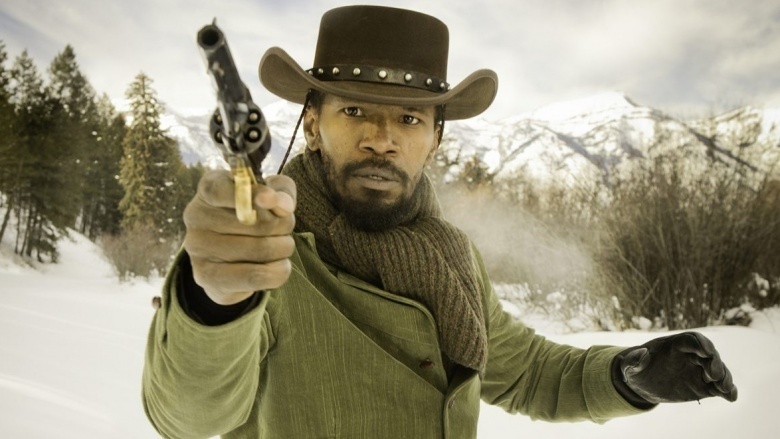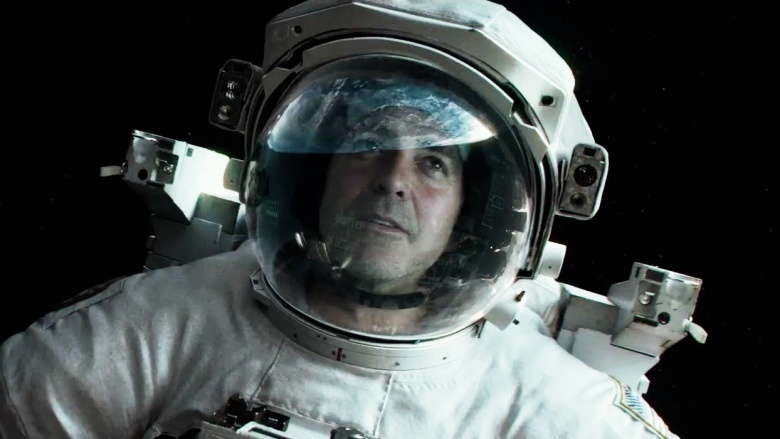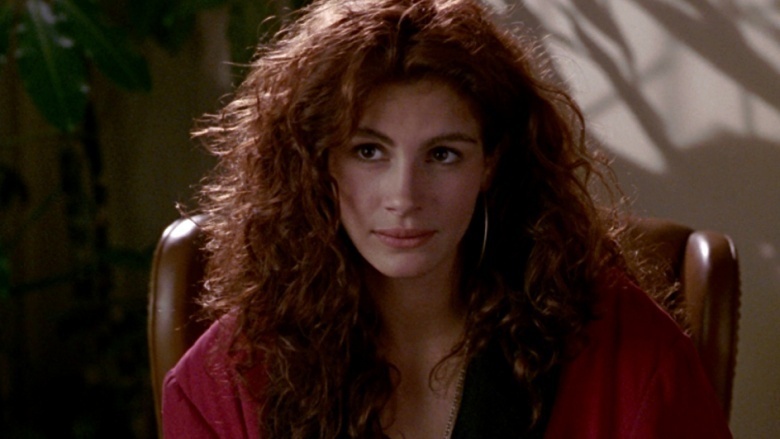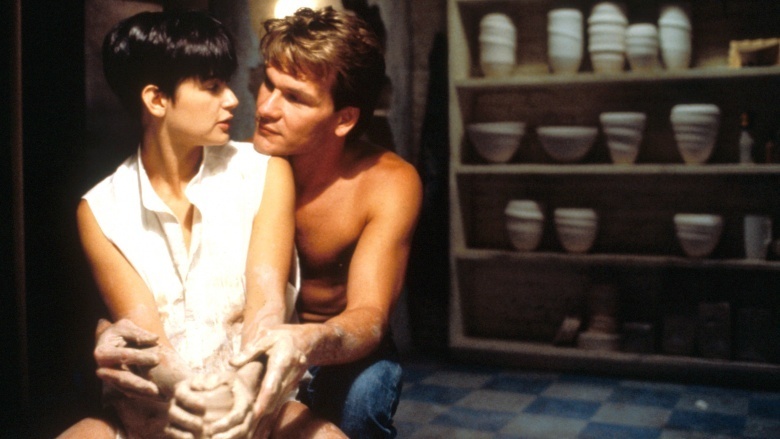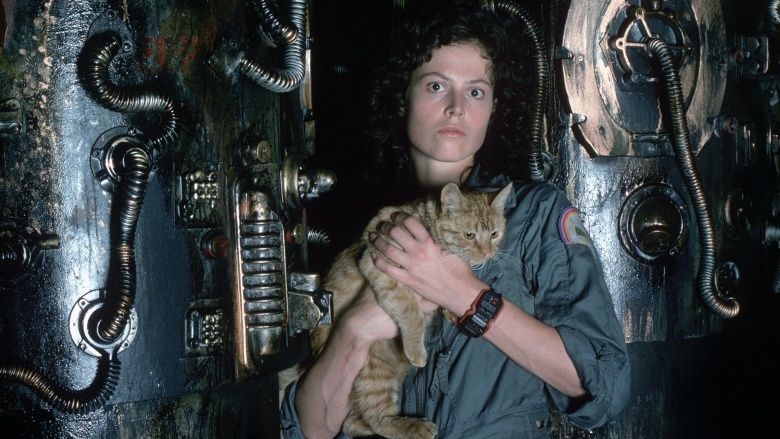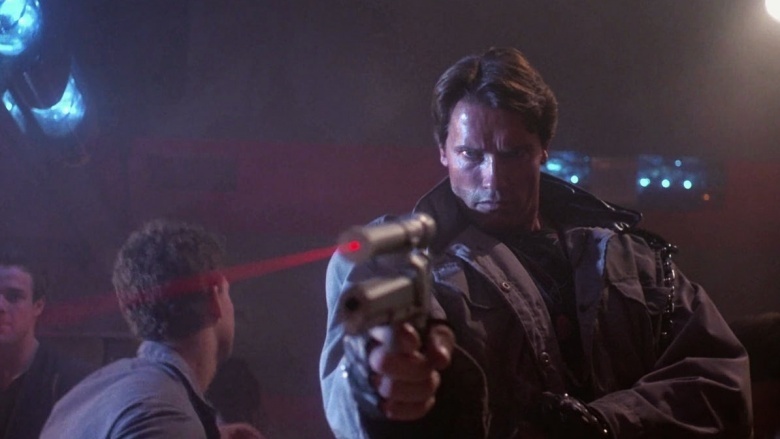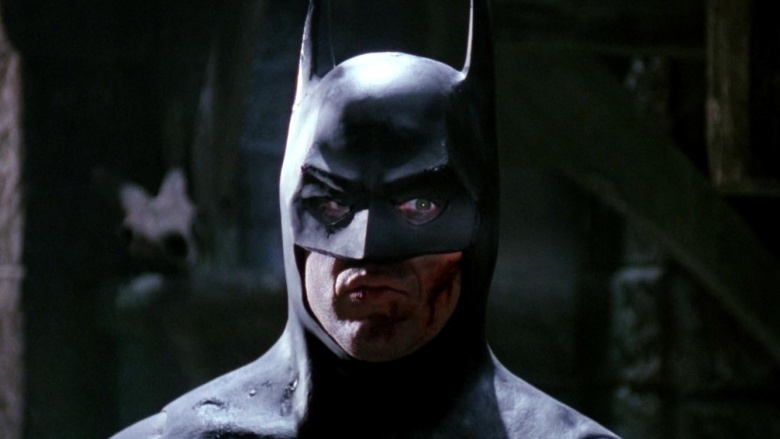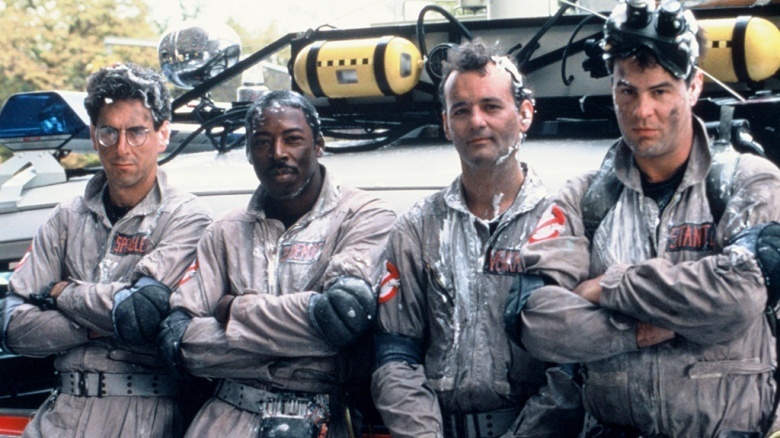Iconic Roles That Were Meant For Someone Else
In Star Trek IV: The Voyage Home, Captain Kirk seeks the help—and heart—of a lovely lady who's also a whale expert. But the part for the marine biologist was initially written for 1980s superstar Eddie Murphy. Murphy, however, wanted to either be an alien or a Starfleet officer. The world of cinema benefitted when he dropped out and made The Golden Child instead.
Han Solo in Star Wars
Harrison Ford was a carpenter on the set of George Lucas's first Star Wars film. Lucas hired him to read lines for other auditioning actors to read against. But Ford is Han Solo, and the rest is movie history.
Captain Janeway In Star Trek: Voyager
Speaking of Star Trek, Captain Janeway from Voyager was first played by film actress Geneviève Bujold. When the filming of the series pilot hit snags when Bujold was unprepared for shooting a TV show, she left the role and it went to Kate Mulgrew.
There's an art to finding the right actor for a role, and sometimes, filmmakers need to see what they don't want before they're able to settle on that perfect match. It's easy to imagine that the stars who play our favorite film characters were the first and only people considered for the part, but that isn't always the case. Hard as it might be to believe, these iconic roles could easily have ended up in different hands.
Aragorn in The Lord of the Rings: Fellowship of the Ring (2001)
Everyone is familiar with Viggo Mortensen's captivating portrayal of Aragorn, the Ranger of the north who becomes the King of Gondor during the Lord of the Rings trilogy. Prior to Mortensen taking up the blade of Anduril, Aragorn was originally supposed to be played by Stuart Townsend, who spent two months training before he was let go. Townsend would go on to star in Queen of the Damned and The League of Extraordinary Gentlemen shortly thereafter, but he didn't look back on his brush with Middle-earth fondly. "I did get shafted up the ass," he told Entertainment Weekly. "I was there rehearsing and training for two months, then was fired the day before filming began."
Gandalf in The Lord of the Rings: Fellowship of the Ring (2001)
Sure, a different Aragorn wouldn't be too much of a change—you just need a guy who can look heroic while maintaining some awesome facial hair. But a different Gandalf is another story completely. Could you have imagined that Peter Jackson and his team originally intended for Sean Connery to play Gandalf the Grey? Luckily, we ended up with Sir Ian McKellen as the lovable wizard. This isn't the first big role Connery refused, either—he also turned down Dumbledore in the Harry Potter series, John Hammond from Jurassic Park, and Morpheus in The Matrix. His reasons for declining in this case, as he explained to the New Zealand Herald, had to do with the story. "I never understood it. I read the book. I read the script. I saw the movie. I still don't understand it," he admitted. "I would be interested in doing something that I didn't fully understand, but not for 18 months."
Tony Montana in Scarface (1983)
Al Pacino's name is synonymous with The Godfather series and Scarface, both of which set the standard for '70s and '80s gangster movies, but things could've been very different—according to internet legend, the role of Tony Montana in Scarface was originally offered to Robert De Niro. At this point, De Niro had already more than proven his capabilities through his work in Taxi Driver, The Godfather Part II, and Raging Bull, but we still can't imagine anyone else but a snarling, coked-out Al Pacino taunting Sosa's men while spraying them with an M-16 during the movie's unforgettable finish.
Django in Django Unchained (2012)
Will Smith's list of R-rated movies is pretty short outside of Focus and the Bad Boys series, but he was originally written in as the titular hero in Django Unchained. What may surprise you even more is that he didn't pass on the movie just to maintain his wholesome image. Speaking with Entertainment Weekly, Smith said, "Django wasn't the lead, so it was like, I need to be the lead. The other character was the lead! I was like, 'No, Quentin, please, I need to kill the bad guy!'" After the Fresh Prince passed, Django became the lead character anyway, with Christoph Waltz's Dr. King Schultz stepping aside for Jamie Foxx to take the spotlight—and Waltz ended up winning an Academy Award, Golden Globe Award, and BAFTA Award for Best Supporting Actor.
Lt. Matthew Kowalski in Gravity (2013)
This award-winning 2013 science fiction film about two astronauts marooned in space could've been very different. When we think about Robert Downey, Jr. these days, we tend to picture his head stuck in the Iron Man helmet, with a ghostly array of UI displays around his face. Now picture Tony Stark as Sandra Bullock's Gravity costar. Even crazier: Scarlett Johansson was a potential candidate for Bullock's role (along with Angelina Jolie and a shortlist of other stars). We're pretty sure two Avengers could've made it back from space with no problems, but then again, Downey accepting death and floating into space just seems a little too much like that scene in The Avengers with the nuclear missile. As he told Howard Stern, Downey passed on the role during a "crazy" screen test he bailed on after learning it'd take "two to four hours." As he put it, "You gotta leave before you flip out."
Shrek in Shrek (2001)
Austin Powers actor Mike Myers' performance as the lovably lumbering titular ogre helped make Shrek an instant classic. Prior to Myers voicing the green guy, a lion's share of the film's dialogue was recorded with Chris Farley. His untimely death in 1997 derailed filming, resulting in major delays and triggering a huge overhaul of the movie's production. Luckily, Shrek was able to find a new voice courtesy of Farley's friend and former Saturday Night Live castmate.
Vivian Ward in Pretty Woman (1990)
Pretty Woman pretty much launched Julia Roberts' career, but she only got the role of hooker with a heart of gold Vivian Ward after a bunch of bigger names passed on it. Director Garry Marshall originally had Meg Ryan lined up to play the part; after she departed the project, Diane Lane got as far as costume fittings before dropping out. Michelle Pfeiffer caught Marshall's eye, but she also declined the role, leaving it in the hands of the relatively unknown Roberts, who was just 21 at the time—and, it turned out, the perfect person to fall in love with Richard Gere onscreen (and sell a truckload of Roxette records along the way).
Sam Wheat in Ghost (1990)
Much to the chagrin of writer Bruce Joel Rubin, who was always in favor of handing the role to Patrick Swayze, Ghost director Jerry Zucker went through a slew of noteworthy actors to star as the deceased Sam Wheat in the supernatural thriller/love story. According to IMDb, some of the names who turned down the film's title role include Johnny Depp, Kevin Bacon, Nicolas Cage, Kevin Costner, Tom Cruise, Harrison Ford, Mel Gibson, Tom Hanks, John Travolta, and Alec Baldwin. Even Bruce Willis, who was married to Ghost star Demi Moore at the time, passed on the project. Eventually Zucker came around to Rubin's way of thinking, which was definitely for the best—we really couldn't imagine that pottery love scene with Tom Hanks or Nic Cage.
Ellen Ripley in Alien (1979)
Sigourney Weaver broke cinematic barriers of female badassery in the Alien franchise, but the production team originally had its eye on a very different person for the role of Ellen Ripley. Meryl Streep was set to star in Ridley Scott's revolutionary sci-fi classic, but dropped out prior to the start of production after the death of her boyfriend, Godfather actor John Cazale. Upon Streep's exit, Scott briefly turned to Veronica Cartwright to play Ripley—and then switched things up again, giving the role to Weaver and switching Cartwright over to the part of Chief Navigator Lambert. Several decades—and classic films—later, it's obvious he made the right choice.
The T-800 in The Terminator (1984)
Before he could tell audiences he'd be back, Arnold Schwarzenegger had to get past a football great to score the role of the unrelenting T-800 cyborg in James Cameron's 1984 sci-fi classic The Terminator. Entertainment Weekly reports that Orion Pictures co-founder Mike Medavoy sat down with Cameron and producer Gale Anne Hurd prior to production, telling them he wanted O.J. Simpson to star as the Terminator. Yup, you read that right: O.J. Simpson. "At the time, O.J. Simpson had one of those commercials for Hertz where he jumped over a counter and ran to get a rental car. It was all of that athletic stuff, which I thought the Terminator should have," Medavoy told EW. Medavoy was so set on having Simpson as the T-800 that he offered Schwarzenegger the role of Kyle Reese, which would ultimately be played by Michael Biehn. Thankfully, common sense (or Skynet) intervened.
Bruce Wayne/Batman in Batman (1989)
Tim Burton helped lay the foundation for the modern superhero movie with his 1989 Batman, but long before Michael Keaton donned the Caped Crusader's cowl, another take on the character spent years in development. Titled The Batman, the project sprung from the pen of writer Tom Mankiewicz, who worked on the 1978 Superman. Mankiewicz wanted an unknown actor to play Bruce Wayne, and planned on casting William Holden as Commissioner Gordon, David Niven as Alfred, and Peter O'Toole as the Penguin. Holden and Niven's deaths in the '80s put The Batman in the hands of director Ivan Reitman, who wanted Bill Murray as Batman and Eddie Murphy as Robin. When you think about Keaton's Bruce Wayne, the idea of Bill Murray in the part doesn't seem all that far-fetched. It's tough picturing him in the Batsuit, but who knows—maybe he could've done it. Eventually, Warner Bros. handed the reins to Tim Burton, who axed Mankiewicz's script completely.
The Ghostbusters, Louis Tully, and Gozer in Ghostbusters (1984)
Paul "Pee-Wee Herman" Reubens was originally intended to play Gozer the Gozerian at the end of Ghostbusters—and that's just one of the many ways in which the 1984 comedy-horror classic changed on its journey to the screen. Dan Aykroyd, who wrote the script with Meatballs and Animal House vet Harold Ramis, originally envisioned a futuristic time-traveling adventure starring himself and fellow Blues Brother/SNL alumni John Belushi. Understanding that the original concept would have made Ghostbusters too expensive to film, Ramis helped reshape the story—and then Belushi's untimely death in 1982 threw a huge wrench into development. The movie was eventually reshaped as the ensemble story we know and love, with Ramis, Bill Murray, and Ernie Hudson joining Aykroyd on a paranormal adventure—and Belushi was there in spirit, too. According to director Ivan Reitman, the glowing green ghost known as Slimer was conceived as a tribute to Belushi—specifically the scene depicting Slimer downing booze, which is reminiscent of the actor's unforgettable Jack Daniels chug in Animal House.
Ramis and Aykroyd not only had a role in mind for John Belushi (we're guessing he was meant to play the role of Peter Venkman), but they also wanted John Candy to star as Louis Tully, a role eventually given to Rick Moranis. Candy, despite his work with Reitman, Ramis, and Murray on Stripes, passed on the project. To top things off, before Hudson joined the cast as Winston Zeddemore, Aykroyd originally wanted his Trading Places co-star Eddie Murphy for the role. Murphy had to pass because he was shooting Beverly Hills Cop, but that's all right, because Ernie Hudson loves this town.

